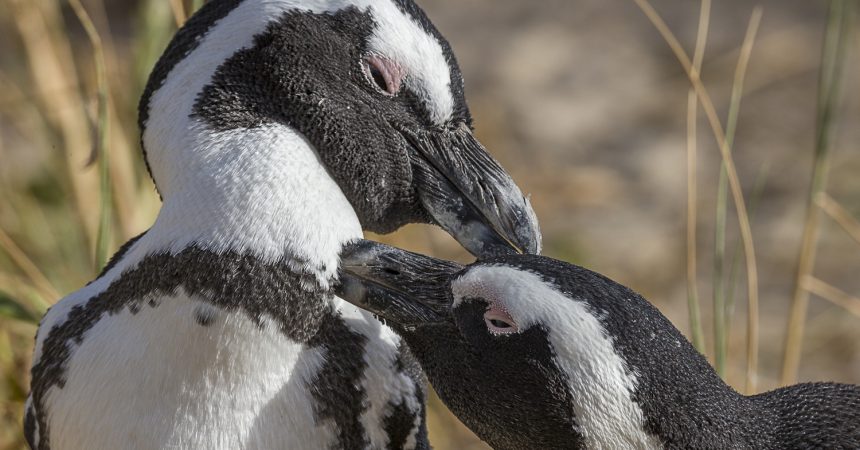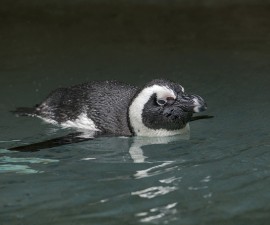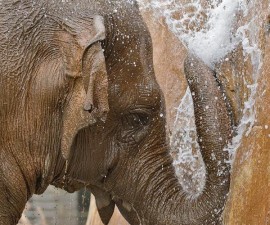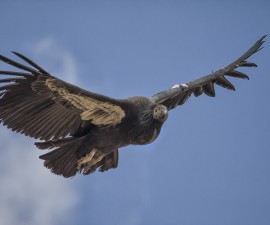Valentine’s Day is coming up, so let’s ponder pair bonding in the Animal Kingdom.
Animals show a wide variety of breeding strategies. But the goal of every type of mating arrangement is the same: to transfer genes to the next generation. Let’s look at how these seven animal species manage to do that. Spoiler: It’s not as simple as you might think.
Siamangs
Each morning, Unkie and Eloise—a pair of siamangs at the Zoo—serenade each other with a loud, soulful duet. In addition to marking their territory, such duetting strengthens the bond between male and female. One of the few primate species that form pair bonds, the long-lived and vocal siamangs Symphalangus syndactylus live in family groups: an adult male-female pair, along with two or three immature offspring. When traveling, the female leads her family, followed by offspring old enough to get around on their own, then the male, who’s often carrying a one-year-old. (Adolescents tag along behind, but eventually go their own way.) In addition to singing, mutual grooming is another way parents keep their relationship strong. Still, some pair bonds don’t last. Either the male or the female may find itself deserted or widowed, free to find another long-term mate. And in spite of their reputation for pair bonding, some siamang nuclear families are built around a female with, not one, but two adult male mates.
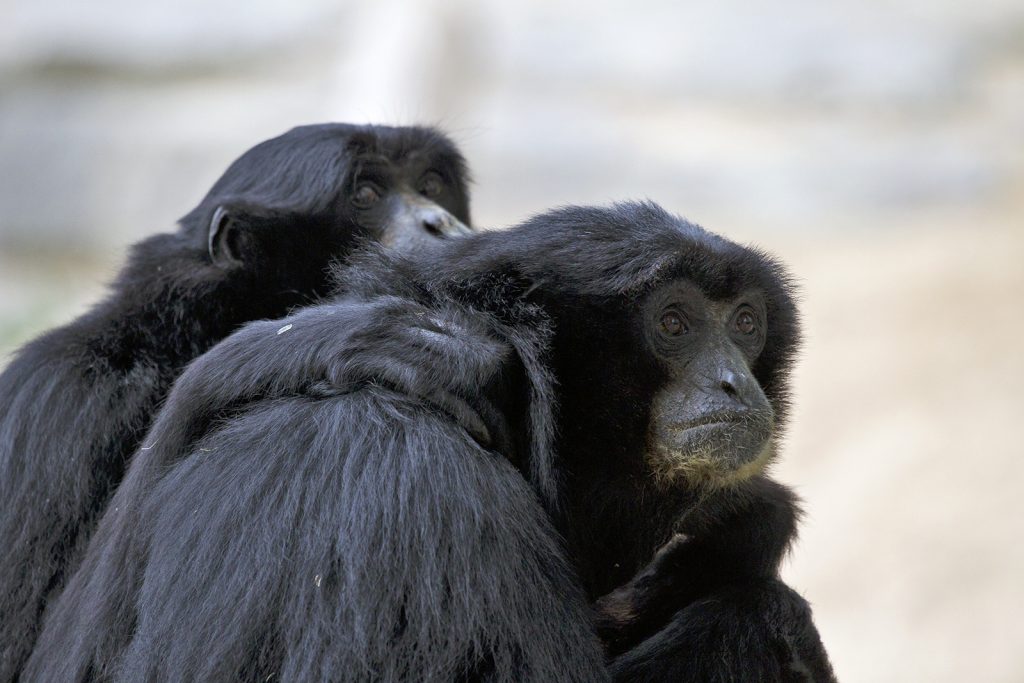
Siamangs
Penguins
We’ve all heard it: after spending months at sea, penguins return to the beach and miraculously manage to reunite with their life-mates. Not so fast. Penguins do establish pair bonds that last throughout the breeding season—which is critical, because both play an important role in incubating an egg and raising a chick. And often—but not always—the same birds re-pair the following year. But some birds do choose a new partner in subsequent years. (Emperor and king penguins have the highest “divorce” rates.)
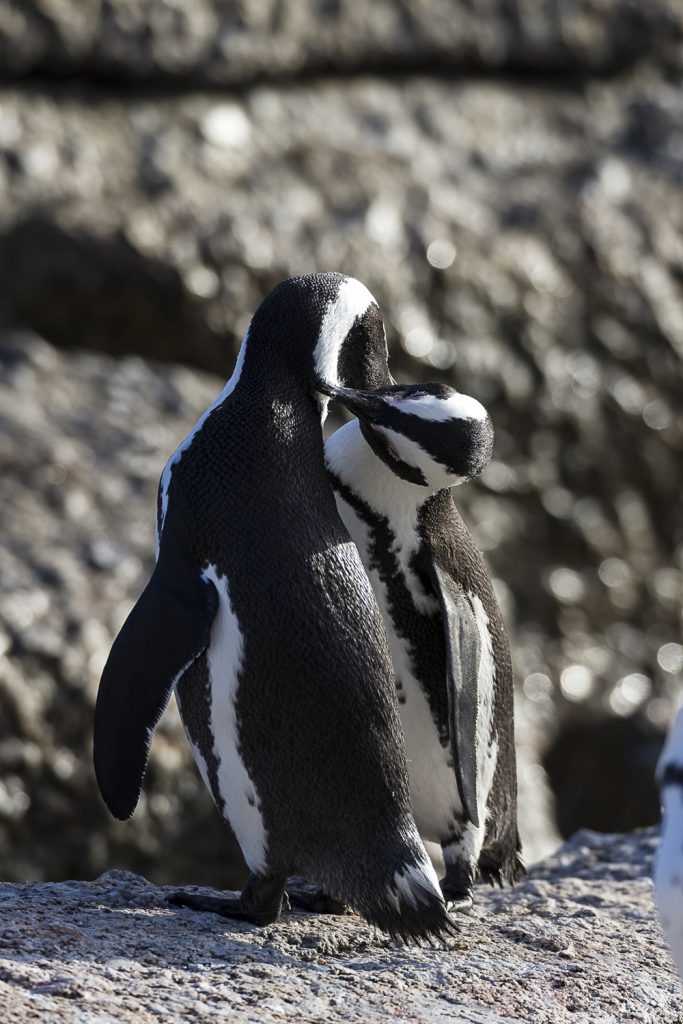
African penguins
In one study of pair-bonded Adélie penguins, paternity tests revealed that some males were raising chicks they hadn’t fathered. Researchers studying the birds noted what they call “extra-pair copulation” (in other words, penguin hanky-panky). This is an example of what experts call “social monogamy”: a pair share parenting duties and habitat, but not necessarily an exclusive breeding relationship. Birds who take advantage of a quick tryst with a member of a socially monogamous pair are called “sneakers.” The phenomenon is not unique to penguins; extra-pair copulations have been documented for more than 100 species of socially monogamous birds.
Still, during penguin breeding season, the urge to bond is strong. Same-sex pairs have been noted with some frequency—including a pair of male African penguins Spheniscus demersus at the Zoo’s penguin habitat. They call, display, and preen each other just as breeding pairs do. They build a nest together, and mind the nest just as if it held an egg. Female same-sex pairs sometimes do raise a chick, thanks to a sneaker.
California condors
California condors Gymnogyps californianus pair-bond, too, but if a pair is unsuccessful at raising a chick, each bird may seek out a new mate. When they are successful, the pair stays together all year long, and their bond may last until one of the birds dies. But it’s not always that simple. Some researchers have reported isolated instances of extra-pair copulations and even mating trios among these critically endangered vultures. (Pro-tip: Check out our Condor Cam for a peek into our California condor recovery efforts—we monitor everything from egg hatchings to preparing adults for release.)
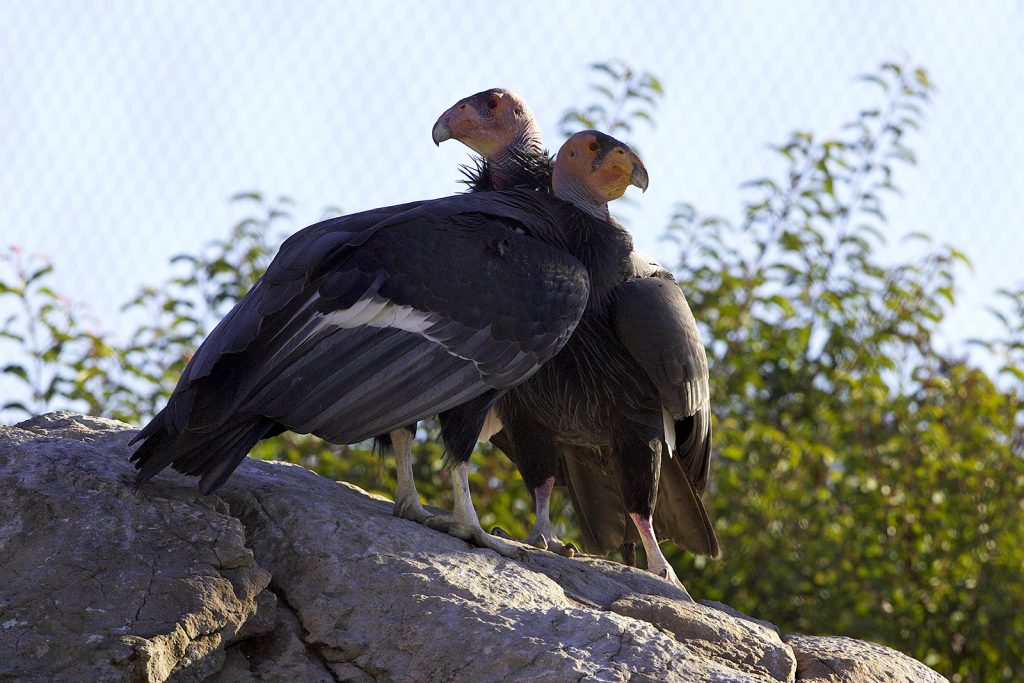
California condors
Arctic fox
Pair-bonded Arctic foxes Alopex lagopus may remain together and use the same den for as long as five years. The female gives birth in the den, and stays there most of the time for the first three weeks, nursing her pups. She’s not able to hunt or feed herself during this time, so the male “brings home the bacon,” provisioning her with fresh meat so that she has enough energy for lactation. Once the pups start eating meat, mom goes back to work, taking turns with dad at working and child care. Offspring from the previous year sometimes stick around to help babysit.
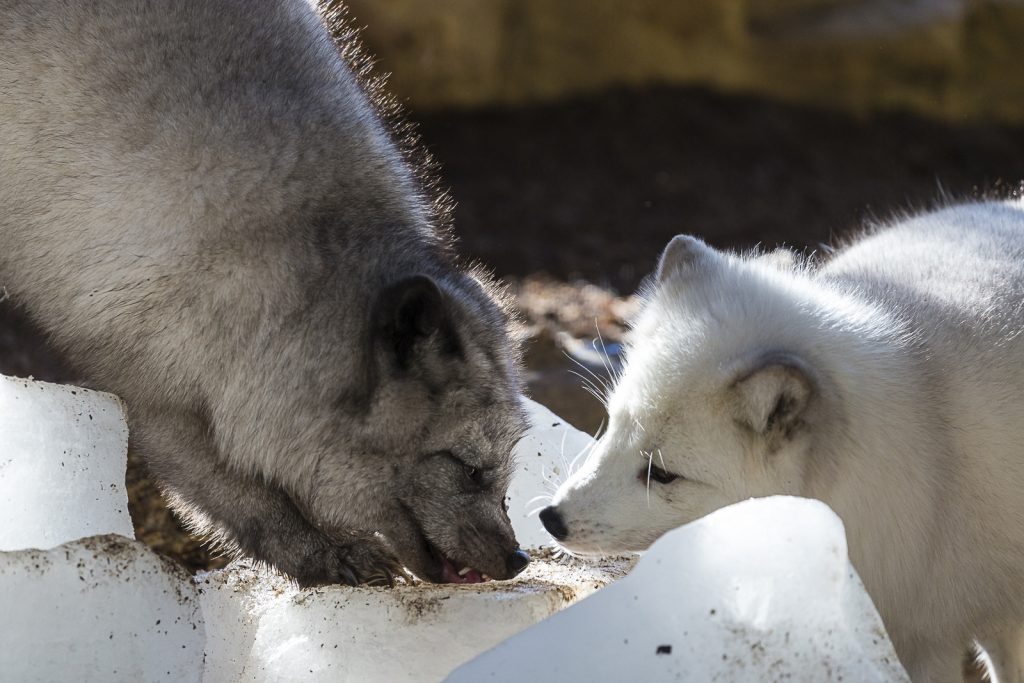
Arctic foxes
Skinks
Sometimes called the Solomon Island skink, this lizard species Corucia zebrata gives live birth, and both mom and dad rear and protect the babies, sometimes with help from older siblings. Such care is unusual for reptiles, and it helps to have a partner you can count on. “They pair bond for life,” says Kim Lovich, curator of herpetology. “As researchers learn more about the ecology of skink species in the South Pacific, we are learning that more and more of them have this pair bonding, and exhibit some care of the offspring as well.” For example, crocodile skinks Tribolonotus gracilis, native to the island of New Guinea, and shingleback skinks Tiliqua rugosa, from Australia, also pair bond.
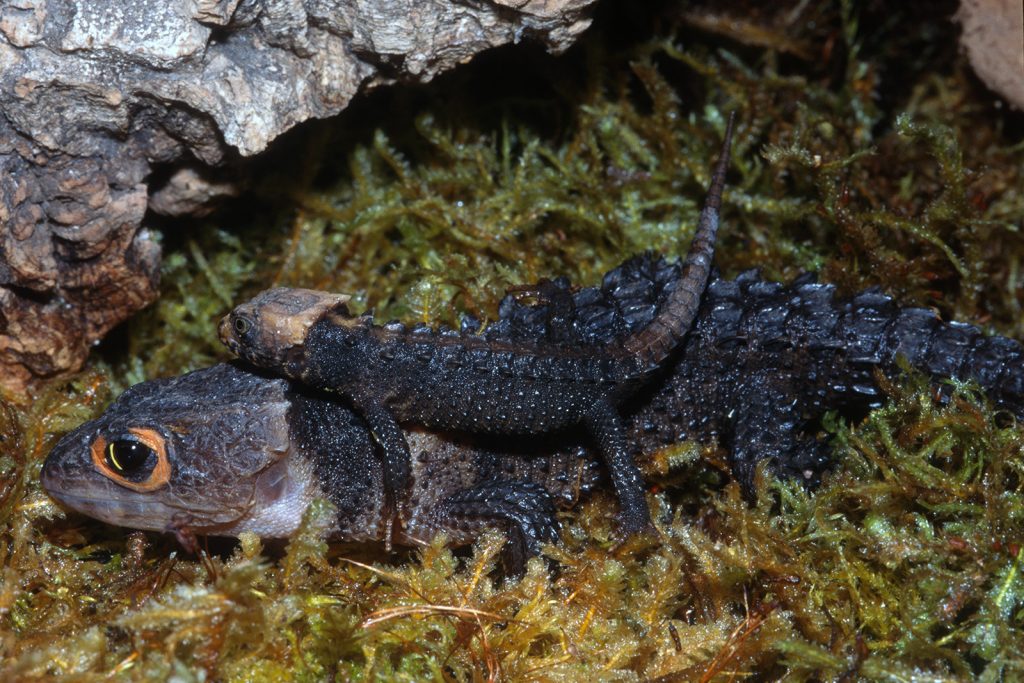
Crocodile skink
Kirk’s dik-dik
Even outside of the breeding season, pairs of Kirk’s dik-dik Madoqua kirkii spend lots of time together. Each pair of the tiny antelopes sets up its own territory, urinating and defecating at the borders to tell other dik-diks to keep out. During breeding season, a male guards his female and attempts to prevent her from leaving the safety of their realm. This keeps him so busy that he doesn’t have much time to look for any additional partners. Still, sometimes a lone male comes looking for a mating opportunity. This doesn’t go over well with the male partner. He chases or fights with the intruder, while the female flees. At least, that’s what happens most of the time. One study found that a few territories included a male with two females.

Kirk’s dik-dik
Crowned Eagles
Talk about a whirlwind courtship! High in the air, a male crowned eagle makes a spectacular series of swooping, roller coaster-like dives and climbs. At the top of each loop, he flaps his wings, throws back his head, and calls loudly. If a female is suitably impressed, she joins him, and the pair lock talons and cartwheel toward the ground, letting go at the last instant. (How’s that for an instant trust-builder?) Together, the pair build a nest of twigs and branches, and if they are successful at breeding, they typically stay together for many years—even for life. But what does “for life” really mean? (Certainly a deceased bird won’t find another mate!) The survivor usually gets back in the game, often returning to the same nest with its new mate.
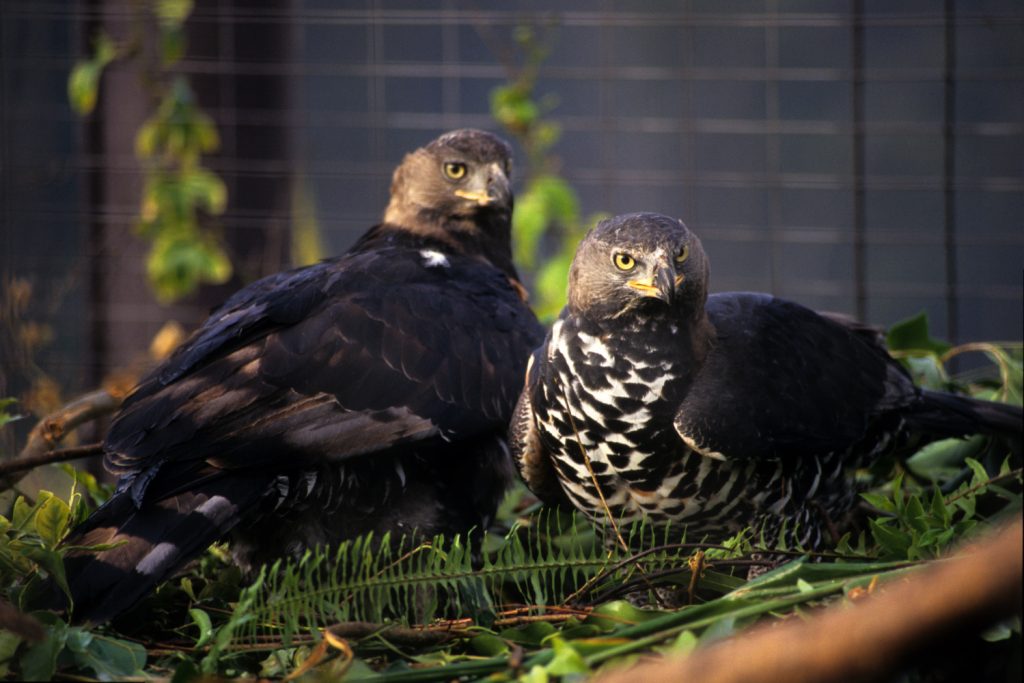
Crowned eagles
Donna Parham is a staff writer for San Diego Zoo Global. Read her previous story, Black Beauty.

